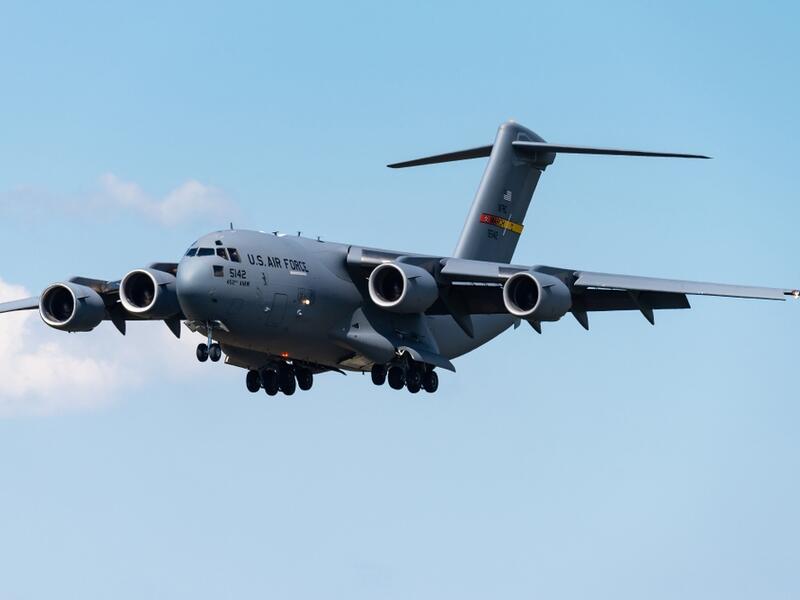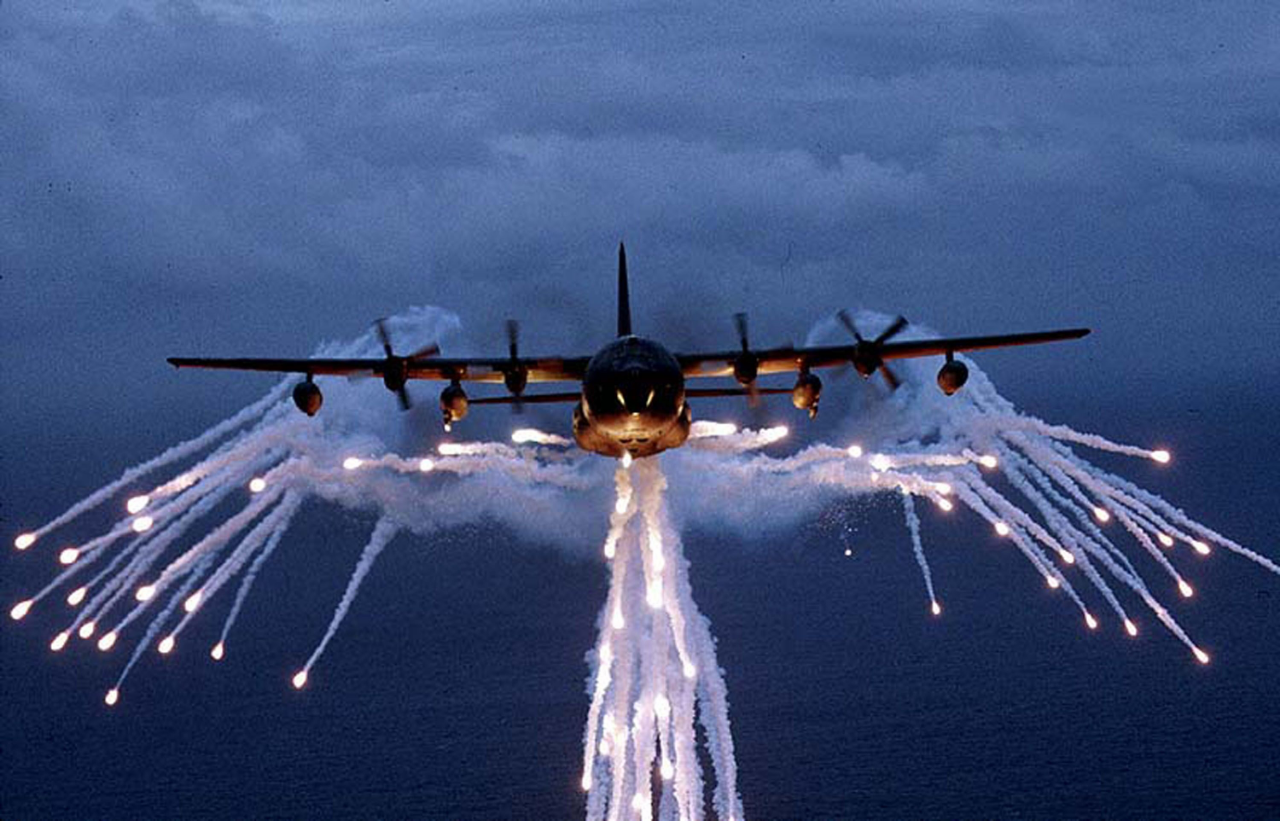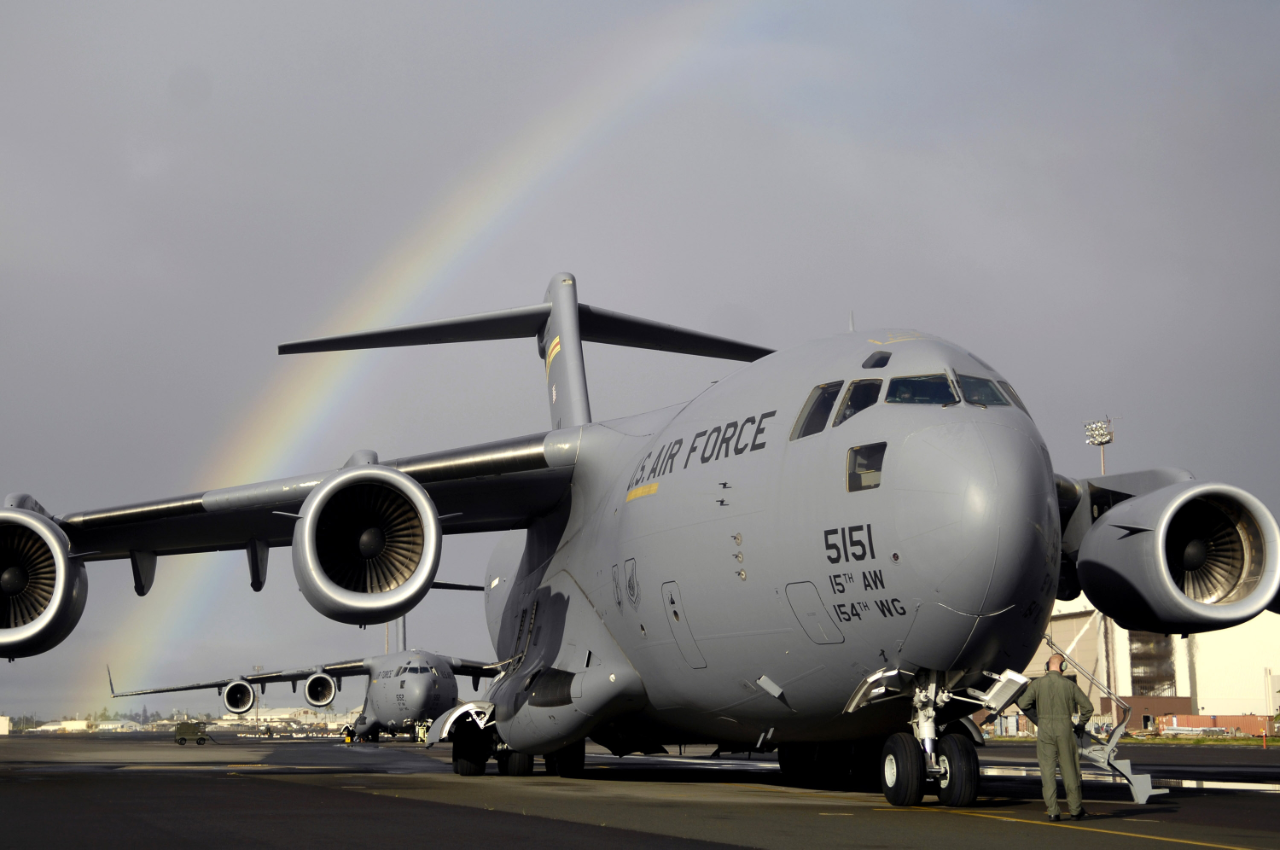TS
yoseful
The Air Force Discovered How to Turn Cargo Planes Into Bombers
Check out this story: The Air Force Discovered How to Turn Cargo Planes Into Bombers https://flip.it/0JXQj7 from Flipboard.

The U.S. Air Force has figured out how to turn transport planes into temporary bombers: load them up with cruise missiles to augment the firepower of regular bombers.
The new “deployment box” system can allow a C-17 Globemaster III transport to quickly switch from hauling cargo to raining nearly three dozen precision-guided cruise missiles down on enemy targets. The system promises to increase the number of cruise-missile-launching platforms in Air Force service by the hundreds—a truly massive increase in firepower.
An MC-130J special operations transport tested the deployment box system in March at White Sands Missile Range in New Mexico, according to Forbes. The cargo plane airdropped a pallet loaded with simulated cruise missiles. Once an accelerometer detects the pallet is clear of the plane and in free fall, the missiles—in the test case, stand-ins for the Joint Air to Surface Standoff Missile (JASSM)—launch and guide toward their targets.
Military pundits have long argued transport planes can serve as ad hoc bombers. In fact, Argentina even used a transport as a bomber in the 1982 Falklands War, rolling unguided iron bombs out the aircraft’s rear ramp to attack commercial shipping.

But transports are slow, large planes that maneuver poorly, and they aren’t built for stealth. As a result, they’re very vulnerable to enemy fire. The American AC-130W Stinger II gunship is heavily armed for attacking ground targets, but can only operate in relatively “permissive” airspace with little threat from surface-to-air missiles.
A transport, therefore, makes a poor bomber—unless the weapons it carries have such long legs that the plane’s vulnerabilities are no longer a factor...
The AGM-158 JASSM conventionally armed cruise missile has a range of 230 miles, so at its maximum range, a C-130 carrying the missile might not be detected by enemy air defenders. Meanwhile, a longer-range version, JASSM-ER, has a range of 575+ miles, and an even longer legged version, -XR (extreme range), reportedly has a range of 1,100 nautical miles
The Air Force currently operates 158 heavy strategic bombers capable of carrying a dozen or more JASSMs at once. A B-2 Spirit can carry 16 JASSMs, the B-52 can carry 12, and the B-1 bomber can carry 24.

The Air Force thinks it can launch 32 JASSM missiles from a single C-17 transport and launch an unknown amount of missiles from a C-130 (though it’s fewer than 32). The Air Force operates more than 300 C-130 Hercules aircraft, and 222 C-17 Globemasters.
The deployment box doesn’t make a transport plane into a super penetrating bomber. It does, however, mean the Air Force could surge a potentially huge number of transports into the bomber role on a particular operation, using them in conjunction with dedicated bombers to deliver an overwhelming strike.
The Air Force could then return the planes to their regular transport duties. At the same time, having a large stable of non-stealthy cruise missile shooters could free up stealthy bombers like the B-1, B-2, and upcoming B-21 Raider to conduct more dangerous missions closer to enemy lines.
---- > hmm, ide yg bagus dr USAF....meskipun ada bbrp kelemahan nya.... Tp, mgkn TNI AU bs mncontoh nya jg...... walo, entah nanti nya akan bs di isi apaan itu disininya, gan.....

The U.S. Air Force has figured out how to turn transport planes into temporary bombers: load them up with cruise missiles to augment the firepower of regular bombers.
The new “deployment box” system can allow a C-17 Globemaster III transport to quickly switch from hauling cargo to raining nearly three dozen precision-guided cruise missiles down on enemy targets. The system promises to increase the number of cruise-missile-launching platforms in Air Force service by the hundreds—a truly massive increase in firepower.
An MC-130J special operations transport tested the deployment box system in March at White Sands Missile Range in New Mexico, according to Forbes. The cargo plane airdropped a pallet loaded with simulated cruise missiles. Once an accelerometer detects the pallet is clear of the plane and in free fall, the missiles—in the test case, stand-ins for the Joint Air to Surface Standoff Missile (JASSM)—launch and guide toward their targets.
Military pundits have long argued transport planes can serve as ad hoc bombers. In fact, Argentina even used a transport as a bomber in the 1982 Falklands War, rolling unguided iron bombs out the aircraft’s rear ramp to attack commercial shipping.

But transports are slow, large planes that maneuver poorly, and they aren’t built for stealth. As a result, they’re very vulnerable to enemy fire. The American AC-130W Stinger II gunship is heavily armed for attacking ground targets, but can only operate in relatively “permissive” airspace with little threat from surface-to-air missiles.
A transport, therefore, makes a poor bomber—unless the weapons it carries have such long legs that the plane’s vulnerabilities are no longer a factor...
The AGM-158 JASSM conventionally armed cruise missile has a range of 230 miles, so at its maximum range, a C-130 carrying the missile might not be detected by enemy air defenders. Meanwhile, a longer-range version, JASSM-ER, has a range of 575+ miles, and an even longer legged version, -XR (extreme range), reportedly has a range of 1,100 nautical miles
The Air Force currently operates 158 heavy strategic bombers capable of carrying a dozen or more JASSMs at once. A B-2 Spirit can carry 16 JASSMs, the B-52 can carry 12, and the B-1 bomber can carry 24.

The Air Force thinks it can launch 32 JASSM missiles from a single C-17 transport and launch an unknown amount of missiles from a C-130 (though it’s fewer than 32). The Air Force operates more than 300 C-130 Hercules aircraft, and 222 C-17 Globemasters.
The deployment box doesn’t make a transport plane into a super penetrating bomber. It does, however, mean the Air Force could surge a potentially huge number of transports into the bomber role on a particular operation, using them in conjunction with dedicated bombers to deliver an overwhelming strike.
The Air Force could then return the planes to their regular transport duties. At the same time, having a large stable of non-stealthy cruise missile shooters could free up stealthy bombers like the B-1, B-2, and upcoming B-21 Raider to conduct more dangerous missions closer to enemy lines.
---- > hmm, ide yg bagus dr USAF....meskipun ada bbrp kelemahan nya.... Tp, mgkn TNI AU bs mncontoh nya jg...... walo, entah nanti nya akan bs di isi apaan itu disininya, gan.....
Diubah oleh yoseful 24-05-2021 23:14
0
2K
1
Guest
Tulis komentar menarik atau mention replykgpt untuk ngobrol seru
Urutan
Terbaru
Terlama
Guest
Tulis komentar menarik atau mention replykgpt untuk ngobrol seru
Komunitas Pilihan